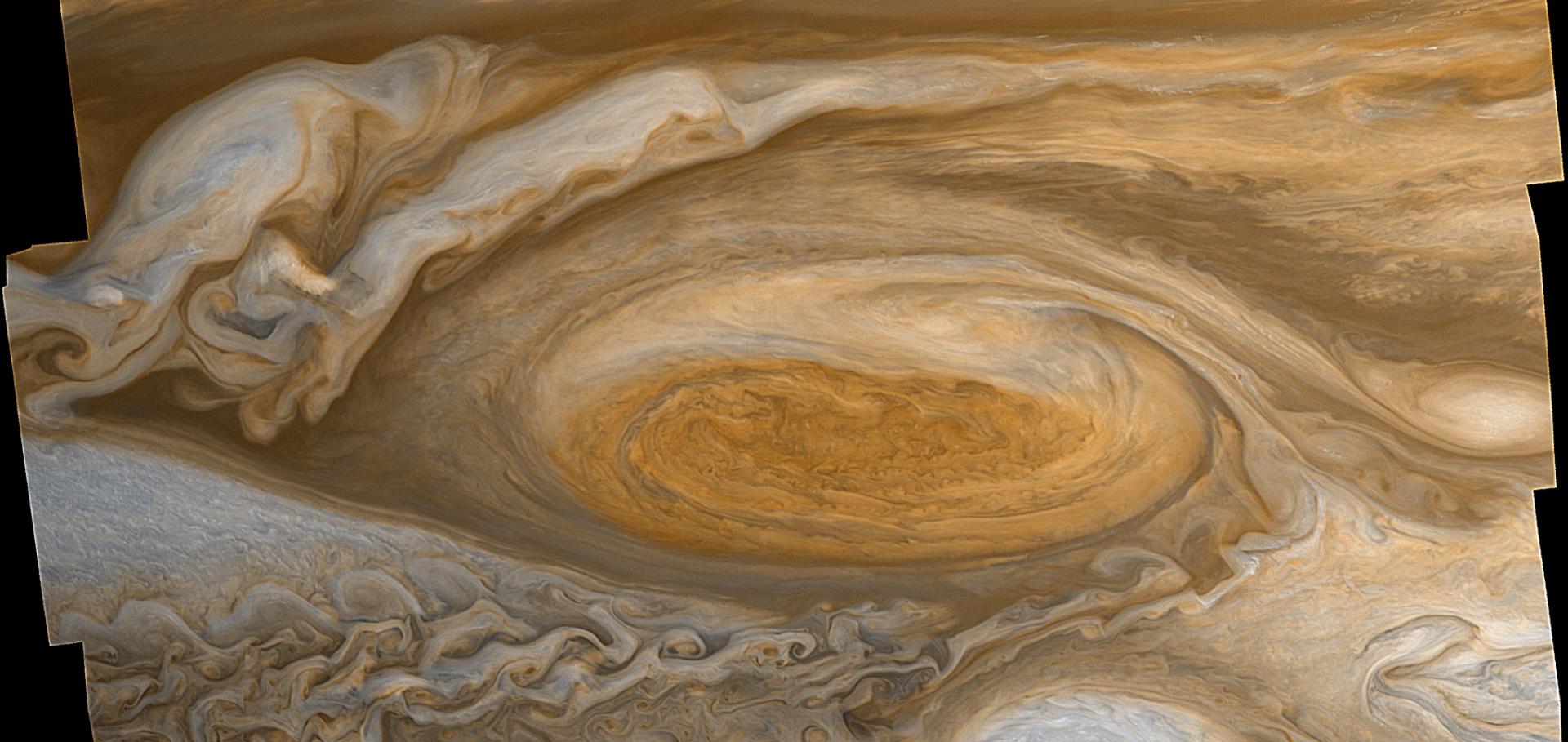Energy exchanges in Saturn's polar regions from Cassini observations: Part I: Eddy-zonal flow interactions
Characterizing regimes of atmospheric circulation in terms of their global superrotation
Abstract:
The global superrotation index S compares the integrated axial angular momentum of the atmosphere to that of a state of solid-body corotation with the underlying planet. The index S is similar to a zonal Rossby number, which suggests it may be a useful indicator of the circulation regime occupied by a planetary atmosphere. We investigate the utility of S for characterizing regimes of atmospheric circulation by running idealized Earthlike general circulation model experiments over a wide range of rotation rates Ω, 8ΩE to ΩE/512, where ΩE is Earth’s rotation rate, in both an axisymmetric and three-dimensional configuration. We compute S for each simulated circulation, and study the dependence of S on Ω. For all rotation rates considered, S is on the same order of magnitude in the 3D and axisymmetric experiments. For high rotation rates, S ≪ 1 and S ∝ Ω−2, while at low rotation rates S ≈ 1/2 = constant. By considering the limiting behavior of theoretical models for S, we show how the value of S and its local dependence on Ω can be related to the circulation regime occupied by a planetary atmosphere. Indices of S ≪ 1 and S ∝ Ω−2 define a regime dominated by geostrophic thermal wind balance, and S ≈ 1/2 = constant defines a regime where the dynamics are characterized by conservation of angular momentum within a planetary-scale Hadley circulation. Indices of S ≫ 1 and S ∝ Ω−2 define an additional regime dominated by cyclostrophic balance and strong equatorial superrotation that is not realized in our simulations.Toward More Realistic Simulation and Prediction of Dust Storms on Mars
Turbulent kinetic energy spectra and cascades in the polar atmosphere of Saturn
Abstract:
The regions of Saturn’s cloud-covered atmosphere polewards of 60o latitude are dominated in each hemisphere near the cloud tops by an intense, cyclonic polar vortex surrounded by a strong, high latitude eastward zonal jet. In the north, this high latitude jet takes the form of a remarkably regular zonal wavenumber m=6 hexagonal pattern that has been present at least since the Voyager spacecraft encounters with Saturn in 1980-81, and probably much longer. The origin of this feature, and the absence of a similar feature in the south, has remained poorly understood since its discovery. In this work, we present some new analyses of horizontal wind measurements at Saturn’s cloud tops polewards of 60 degrees in both the northern and southern hemispheres, previously published by Antuñano et al. (2015) using images from the Cassini mission, in which we compute kinetic energy spectra and the transfer rates of kinetic energy (KE) and enstrophy between different scales. 2D KE spectra are consistent with a zonostrophic regime, with a steep (~n-5) spectrum for the mean zonal flow (n is the total wavenumber) and a shallower Kolmogorov-like KE spectrum (~n-5/3) for the residual (eddy) flow, much as previously found for Jupiter’s atmosphere (Galperin et al. 2014; Young & Read 2017). Three different methods are used to compute the energy and enstrophy transfers, (a) as latitude-dependent zonal spectral fluxes, (b) as latitude-dependent structure functions and (c) as spatially filtered energy fluxes. The results of all three methods are largely in agreement in indicating a direct (forward) enstrophy cascade across most scales, averaged across the whole domain, an inverse kinetic energy cascade to large scales and a weak direct KE cascade at the smallest scales. The pattern of transfers has a more complex dependence on latitude, however. But it is clear that the m=6 North Polar Hexagon (NPH) wave was transferring KE into its zonal jet at 78o N (planetographic) at a rate of ∏E ≈ 1.8 x 10-4 W kg-1 at the time the Cassini images were acquired. This implies that the NPH was not maintained by a barotropic instability at this time, but may have been driven via a baroclinic instability or possibly from deep convection. Further implications of these results will be discussed.
References
Antuñano, A., T. del Río-Gaztelurrutia, A. Sánchez-Lavega, and R. Hueso (2015), Dynamics of Saturn’s polar regions, J. Geophys. Res. Planets, 120, 155–176, doi:10.1002/2014JE004709.
Galperin, B., R. M.B. Young, S. Sukoriansky, N. Dikovskaya, P. L. Read, A. J. Lancaster & D. Armstrong (2014) Cassini observations reveal a regime of zonostrophic macroturbulence on Jupiter, Icarus, 229, 295–320.doi: 10.1016/j.icarus.2013.08.030
Young, R. M. B. & Read, P. L. (2017) Forward and inverse kinetic energy cascades in Jupiter’s turbulent weather layer, Nature Phys., 13, 1135-1140. Doi:10.1038/NPHYS4227


